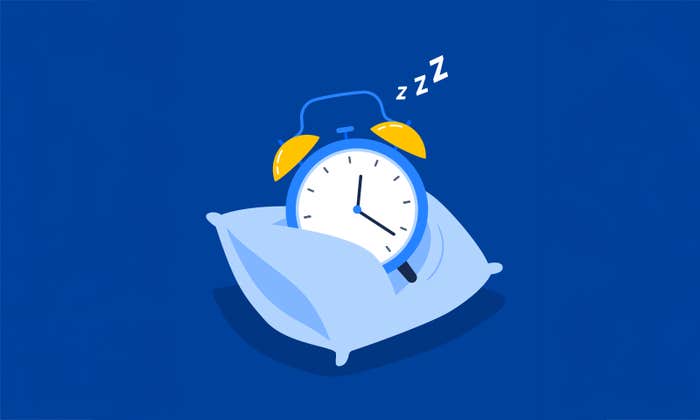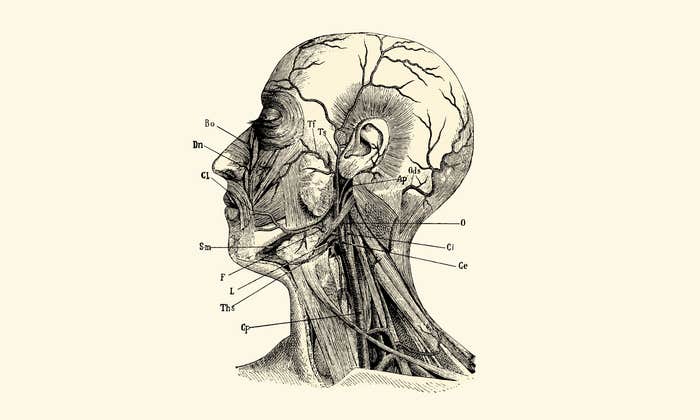
The apotheosis of my five-year orthodontic torment was a sad admission from the orthodontist: After thousands of dollars invested in what felt like medieval technology, my braces had not only failed to ameliorate a complex situation but created a new problem for which, even today, there is no solution. I won’t say it keeps me up at night, but my husband’s snoring often does—and it turns out the braces he wore as a child may be to blame for that.
Suffering for the perfect smile has long been de riguer in middle-class American childhoods and beyond. Today an estimated 50 to 70 percent of children in the United States will be treated for “malocclusion,” or bad bite. Twenty-five percent of orthodontic patients today are adults belatedly getting around to this rite of passage. We take it for granted that the effort is worth it, but according to eminent biologist Paul Ehrlich and craniofacial expert Sandra Kahn—the authors of Jaws: The Story of a Hidden Epidemic—braces are a temporary band-aid on a long-unfolding evolutionary disaster. Over the ages our teeth and our tongue have become ever more crowded by the shrinking of the human jaw. Not only is this an aesthetic disaster, but it compromises our breathing, which in turn can disrupt sleep. And there, our problems really begin.
It’s harder for us to breathe than it was for our jaw-endowed ancestors.
Ehrlich and Kahn trace the crooked jumble of teeth many of us develop to the agricultural revolution. (As Stanford paleontologist Richard Klein says, “I’ve never seen a hunter-gatherer skull with crooked teeth.”) When humans turned to farming, food got softer and we stopped chewing so hard. This lack of exercise, Ehrlich and Kahn hypothesize, led to a reduction in Homo sapiens’ face and jaw size. With less room, our teeth have gotten crowded and often jumbled up. It became harder to breathe.
Changes in the position of the larynx to make way for human speech had also had negative impacts on what Ehrlich and Kahn call the “facial-airway configuration.” The tongue, now too big for the restricted jaw, gets in the way of breathing as it falls back and restricts the passageway between the nose and the lungs, “causing a rhythmic rumbling sound” also known to challenge the equanimity of even the otherwise most contented of co-sleeping couples. Ehrlich and Kahn bolster their claim that snoring is an artifact of contemporary civilization, noting that the sound would have alerted predators to “relatively helpless human individuals.”
Bulky braces can further constrict this vital breathing pathway, but in Ehrlich and Kahn’s view, the problem is really that they are a cosmetic fix with a short duration. While not banning orthodontics altogether, they advocate developing stronger jaws to begin with. Breast-feeding babies helps because it takes more effort on the child’s part than sucking on a bottle. Encourage your children to chew thoroughly—Ehrlich and Kahn even advocate gum. They warn that “poor oral posture” contributes to constricting airways. A particular culprit is mouth-breathing, often exacerbated by the fact that we find ourselves indoors so much, where concentrated allergens help stuff up our nasal passages. Mouth-breathing is a sign of a slack jaw and is an indication you are not getting enough oxygen. It’s harder for us to breathe than it was for our jaw-endowed ancestors.
Smaller jaws, constricted airflow, and snoring come afoul of another signature evolutionary development—sleep, particularly the deep-dreaming phase known as rapid eye movement (REM) sleep. Ehrlich and Kahn warn that sleep disrupted by snoring (and its cousin sleep apnea) are “linked to serious lifelong health problems” including “ADHD, depression, cancer, and heart disease.”
Neuroscientist and sleep expert Matthew Walker, author Why We Sleep: Unlocking the Power of Sleep and Dreams, warns that too little snoozing “demolishes your immune system” and adds anxiety and suicidality to the discontents of disrupted, inadequate sleep. According to Walker, the non-dreaming stage called NRED sleep can be detected in all species, but REM sleep, an evolutionarily more recent development, is enjoyed only by vertebrates. Walker credits REM sleep with increasing our ability to recognize and navigate “the kaleidoscope of socioemotional signals that are abundant in human culture,” thus enabling “the creation of large, emotionally astute, stable, highly bonded, and intensely social communities of humans.” REM sleep fuels creativity by integrating new memories into the “entire back catalog of your life’s autobiography,” Walker writes, night after night rebooting vast associative neural networks and revising “what a collection of information means as a whole.”
Yet even if improper breathing, credited by Ehrlich and Kahn to our mealy-mouthed jaws, disrupts REM sleep and threatens all of this innovative meaning-making, exceptions still arise. An interesting case study would seem to be that of the novelist Vladimir Nabokov. In the recently published journal Insomniac Dreams, the author of Lolita recounts “Curious features of my dreams,” including “very exact clock time awareness but hazy passing-of-time feeling….” Nabokov queries his own torturously interrupted nocturnal narratives to see if his dreams might predict the future. They don’t, really—although in describing “fairly sustained, fairly clear, fairly logical (within special limits) cogitation,” Nabokov seems to anticipate Walker’s account of REM sleep. Otherwise, the hardly sleeping, fantastically creative Nabokov somewhat belies the sleep-deprivation dangers Ehrlich, Kahn, and Walker point out. Though it must be said that hard at work in one photo, the great author’s mouth does seem to be hanging open.
Mary Ellen Hannibal is most recently the author of Citizen Scientist: Searching for Heroes and Hope in an Age of Extinction, and a Stanford media fellow.


























